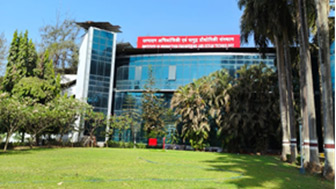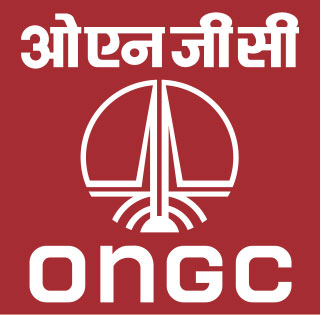
Introduction
The institute “Institute of Production Engineering & Ocean Technology” (IPEOT) has come into existence on 31st August 2023 post the merger of Institute of Oil and Gas Production Technology (IOGPT) and the Institute of Engineering and Ocean Technology (IEOT) to bring about resources optimization and foster a more streamlined & cohesive approach towards achieving ONGC's organizational objectives.
The Institute of Oil & Gas Production Technology (IOGPT) was established in 1984 under assistance from UNDP and ADB to meet the production and processing related technological requirement of Oil and Gas fields and processing plants. The Institute of Engineering and Ocean Technology (IEOT) was founded in 1983 for innovation, development and acceleration of the future plan of ONGC to achieve self- reliance in technology.
Capabilities
The major strength of the institute lies in its highly qualified, trained and experienced technical manpower which has a harmonious blend of youth and experience, who are equipped to take up any challenge in the field of hydrocarbon production and processing. Equipped with a combination of technical strength, state of the art laboratories & software, the institute commands a unique place in the following areas.
- Well stimulation, Sand control, well completion / intervention and water/gas shut off.
- Analysis, modelling and simulation of surface facilities & process systems including HAZOP, HAZID, QRA studies.
- Failure Analysis of pipelines, downhole tubular and equipment. Selection of Material of Construction for severe corrosive conditions. Scale Management.
- Conceptualization, selection & optimization of artificial lift systems
- Development of onshore and offshore fields, in shallow as well as deep water
- Life Extension & Structural Integrity Assessment of offshore structures and Geotechnical investigations for offshore platforms.
Apart from catering to the needs of the Assets, Basins & Plants of the parent organization, IPEOT’s clientele includes Joint Venture companies, ONGC Videsh and other commercial entities in the Oil & Gas sector. Quality, reliability and timely completion of projects are Institute's forte. The institute has completed more than 5500 R&D projects and numerous short-term studies towards production enhancement and systems improvement. The institute has 29 Patents & 22 Copyrights and is associated with IITs and other renowned research institutes for R&D activities.
Highlights of FY 2023-24
Total projects completed: 210 (163 Scheduled & 47 Unscheduled); short-term studies: 166; MDT/Task force Studies (participation): 96. For the year 23-24 IPEOT carried out 3 commercial projects for the clients like M/s Invenire Petrodyne Ltd, OVL, ROVUMA Mozambique and MECL Columbia (ongoing).
Significant Projects
Some of the major R&D projects completed during 2023-24 by IPEOT:
- Minimizing Fines and Proppant Migration by Altering Zeta Potential: Developed a proppant and fines agglomerating formulation (PFAF) with zero mV zeta potential; recommended 5% PFAF concentration for field trials, reducing sand cleaning workovers.
- Design of Stimulation Formulation for Asokenagar Field: Recommended a 10% acetic acid-based organic acid formulation for production enhancement due to higher calcite content in the formation.
- Suitability of Foamed Acid Technique in Carbonate Reservoirs of Mumbai Offshore: Suggested using 2% Lauryl Amine Oxide surfactant for foamed acid preparation to enhance well performance in sub-hydrostatic carbonate reservoirs.
- Flow Assurance Study in Wells of Malleswaram Field Post HF: Recommended 10% limonene and 10% cardanol in diesel for organic formation damage and wax deposition, offering a green alternative to xylene and toluene.
- Suitable Surfactant Treatment for Wettability Alteration in Wells of MH Asset: Proposed 3% anionic surfactant with 2% NIS for 24-hour soaking to enhance production.
- Suitable Stimulation Technique for Injectivity Improvement in WI Wells of Geleki Field: Chelating agent-based acid system (HEDP & Citric Acid) improved permeability, preventing precipitation during acid jobs.
- Scheme for Recovery of Heavier Hydrocarbons from Fuel Gas: Concluded that membrane technology is not economically viable due to negative IRR for implementation at Hazira Plant.
- Flow Assurance Study for Raniganj CBM Block Due to Relocation of GCS: Evaluated two pipeline networking options, recommending the one with lower total pipe length for connecting wells to GCS, optimizing CBM gas monetization.
- Review of Radiation Levels Considering 124 m Stack Height in Flare Stack Project at Uran Plant: Verified that a 124 m flare stack height is adequate for safety compliance, with radiation levels within acceptable limits.
- Adequacy Study of Surface Facilities at Jhalora GGS-2: Identified inadequacies in heater treater and other facilities; recommended additional surface facilities and modifications to save ~45% fuel gas.
- Debottlenecking of FPSO by Installing Inline Separator, Cluster-7, MH Asset: Recommended installing an inline separator to handle associated gas and increase production, optimizing resource utilization.
- Failure Analysis of Rotor Component of PCP Pump of Well BK #32- CBM Asset: Recommended specific material standards and post-processing treatments to prevent premature rotor failures and ensure asset integrity.
- Analysis of Tubing Failures in Identified SRP Wells of Mehsana Asset: Suggested using modified 13 Chrome-UNS no. 41426 tubing for improved abrasion resistance and preventing failures, with specific recommendations for tubing and sucker rod buckling issues.
- Review of Flow Assurance and Operability of Cluster-2A Oil Fields of KG DWN 98/2 Block, EOA Asset: Implemented start-up strategies for flow assurance, successfully commencing production from India's first deepwater oil field.
- Simulation of Integrated Digital Model of SBHT Pipeline Network for ILA Pigging Strategy: Developed a pigging strategy to handle liquid surge volumes and increased gas flowrate for efficient pigging operations.
- Leg Penetration Analysis for New Generation Heavier ILJU Rigs: Provided leg penetration analysis for deploying new generation heavier ILJU rigs, aiding Rig Move & Safety Cell in making informed decisions.
Technology Induction/Absorption
The following are the technologies induced/developed in 2023-24:
- Development of environment friendly alternate Solvent for Asphaltene removal.
- Development of suitable enzyme-based breaker for frac fluid used in CBM.
- Development of Novel Single Phase Retarded Acid System for Stimulation of Limestone Reservoir.
- Upgradation of SACS Software: SACS Software has been upgraded to new edition SACS CONNECT V16.0. Upgraded version of software comprises of latest codes for analysis along-with enhancement in user interface.
- Automation of M&C Laboratory with state-of-the-art Abrasive Cutting Machine for metallographic samples: IPEOT has procured Abrasive Cutting Machine for metallographic samples with automatic cutting provision.
- Upgradation of PHAST/SAFETI software: A new version of PHAST/SAFETI software (from version 8.61 to 8.7) with additional features installed for performance enhancement of Quantitative Risk Assessment studies includes CFD capabilities for modelling Jet Fires.
- Heated Centrifuge procured for IPEOT laboratory up-gradation.
Papers Published / Presented
The institute published/presented 37 technical papers in national/international - journals/conferences in 2023-24.
IPRs / Patents / Copyrights / Trademarks
The institute holds 30 patents and 24 copyrights as on 31st March 2024. IPEOT is the highest IPR generator in ONGC. The following are the details for FY 23-24:
Patents Filed: 02
- Pour point depressant composition for waxy crude oil.
- Synthesis of silica-based hydrophobic particles using a single organosilane
Patents obtained: 06.
- Composition for Completion Fluid for use in ultra-high Pressure and high temperature applications
- Production Enhancement Apparatus for a Sucker Rod Pump
- Fiber Reinforced Plastic (FRP) Fencing System for Oil & Gas Well Head Areas in on land
- Apparatus and method for preventing liquid from overtopping a bund wall.
- Debris catcher for offshore process platforms
- A Method of Fuel Gas Reduction for Indirect Bath Heater (IDBH)
Copyrights registered: 03.
- PEBUL SOFTWARE: Lift selection software specifically focussing on gas well deliquification.
- Oil field analyzer: It provides a single platform to feed all well related data at single place which can be shared across the organization/Producing Asset. Ability to determine Production Variance-Maximum, minimum and percentage variation of oil, liquid and gas rate is one of the salient features of the software, which could be useful to check the performance of a particular well.
- DAIL Software: Dynamic Application of Intermittent Gas Lift (DAIL)” is mechanistic software based on first principle which carries out dynamic simulation of the Intermittent Gas Lift process to predict, analyze and optimize its performance. As a Physics based model, it performs a realistic simulation of the transient physical processes in an Intermittent Gas Lift cycle.

